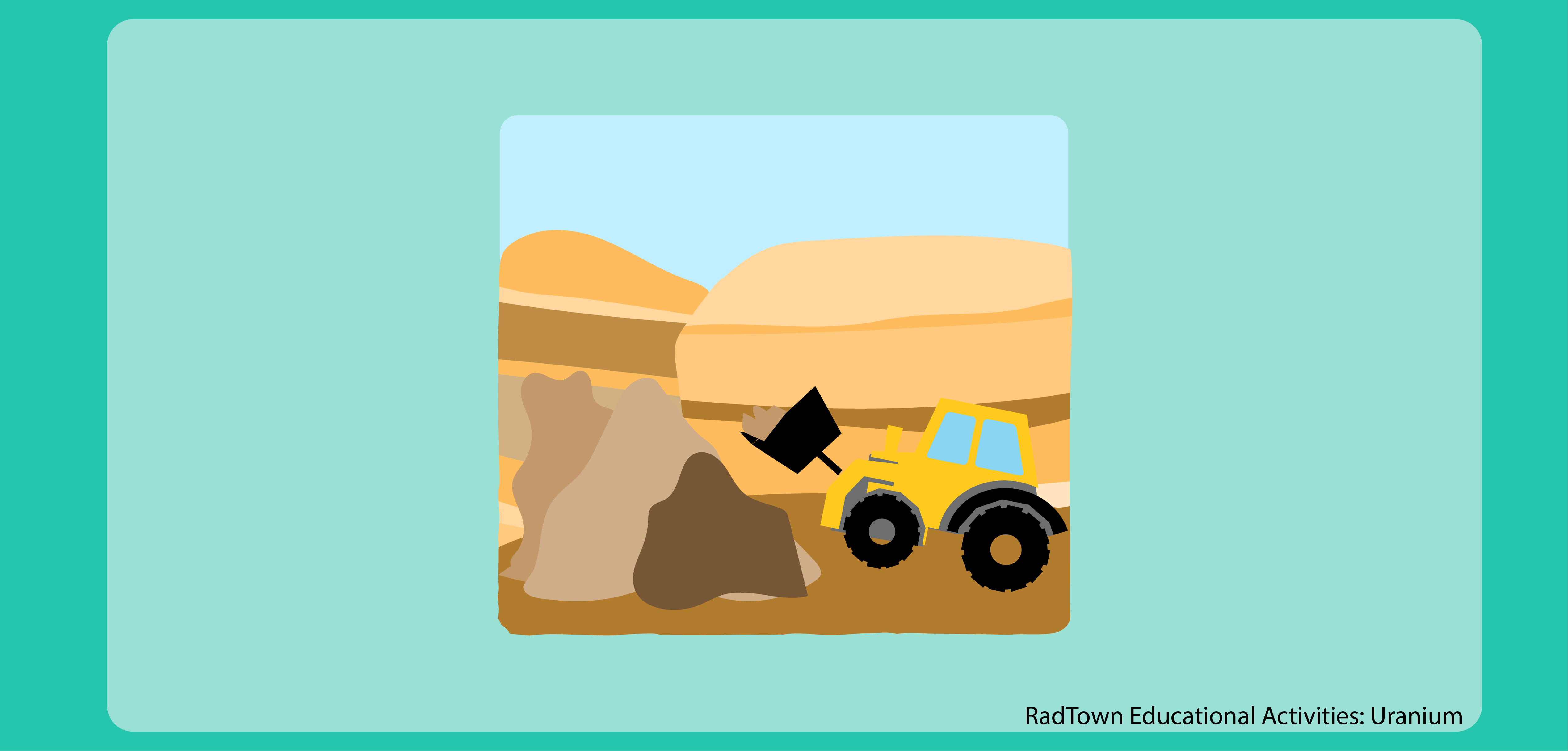RadTown Uranium Activity 3: Uranium Ore Sources in the U.S.
Uranium mining poses both benefits and impacts to the communities surrounding them. This activity asks students to make a case for benefits and impacts of uranium mining in the United States. Students will have the ability to share their stories with one another and discuss local opinions about mines. This activity is intended for middle and high school students.
- Objectives
- Next Generation Science Standards
- Materials and Resources
- Time
- Vocabulary
- Directions
- Common Core State Standards
- Printable Worksheets and Classroom Aids
Objectives
Students will:
- Examine a map of U.S. uranium mines.
- Share personal stories about the impacts of uranium mining on their family.
- Examine the benefits and impacts of uranium mining on communities.
Next Generation Science Standards
The concepts in this activity can be used to support the following science standard:
- ESS3. Earth and Human Activity
Materials and Resources
Each italicized document title can be found at the bottom of this page, and is available for printing and distribution.
- Uranium: Teacher Background Information
- Vocabulary Materials
- Uranium Ore: Benefits and Impacts Worksheet (one per pair or group) and Uranium Ore: Benefits and Impacts: Teacher Answer Key
- U.S. Uranium Mines map (display with computer and projector or copy and share with students)
- Student computers with Internet access if allowing students to research in class
Time
45-60 minutes, not including optional activities or extensions. Alternatively, students could complete the activity outside of class and discuss their findings in the next class period.
Vocabulary
- Ionizing radiation
- Uranium
- Uranium milling
- Uranium mining
Directions
- Start with a vocabulary activity if students are not familiar with uranium and the vocabulary used in this activity.
- Poll students to determine how many are aware of any active or abandoned uranium mines within their state or region. In preparation, you may want to contact your regional Environmental Protection Agency office to confirm the location of any nearby mines.
- Display the U.S. Uranium Mines map. Have students examine the map and proximity of active or abandoned uranium mines near their community.
- Allow students to share stories of family members who have worked in uranium mines and any impact this has had on their family. Alternatively, you can share excerpts from The History of Uranium Mining and the Navajo People.
- Explain that the U.S. uranium mining boom started in the mid-1940s during World War II. Once the U.S. built a stockpile of uranium in the 1970s, the mining industry slowed. Many uranium mines were abandoned without restoring the land to its original state. Past mining activities and the abandoned mines have greatly impacted Native American communities.
- Distribute the Uranium Ore: Benefits and Impacts Worksheet to pairs or groups. Direct students to research and identify benefits and impacts of uranium mining in the 1940s to 1970s. Students can use the Uranium: Teacher Background Information (Uranium Mines section), The History of Uranium Mining and the Navajo People, family members, and other resources to complete the worksheet.
- Conclude by discussing student responses as a class using the Uranium Ore: Benefits and Impacts: Teacher Answer Key and ask students to share something they learned from the activity.
- Optional activities or extensions: Have students:
- Prepare for and debate the pros and cons of whether uranium mining should continue in the U.S. or in their area.
- Research the benefits and impacts of uranium mining in other countries including Kazakhstan, Canada and Australia.
- Develop a skit or song about the benefits and impacts of uranium mining.
The concepts in the Uranium Ore Sources in the U.S. activity align with the following
- CCSS English Language Arts Standards for Literacy in History/Social Studies, Science, & Technical Subjects:
- CCSS.ELA-LITERACY.SL.6-12.2 Comprehension and Collaboration
- CCSS.ELA-LITERACY.SL.6-12.5 Presentation of Knowledge and Ideas
- CCSS.ELA-LITERACY.RST.6-12.7 Integration of Knowledge and Ideas
- CCSS.ELA-LITERACY.WHST.6-12.1 Text Types and Purposes

